3:1 A Personal Fall Arrest System ("PFAS") is used to stop you during a fall from a working level. It usually is made up of an anchorage, connectors, and body harness, and may include a lanyard, deceleration device, or lifeline. 1926.500(b)
3:2 An anchorage is a secure point of attachment for lifelines, lanyards, or deceleration devices. 1926.500(b)
3:3 A body harness consists of straps you wear to distribute forces from a fall over different areas of your body to minimize possible injury. 1926.500(b)
3:4 A connector connects parts of your PFAS and positioning device systems together, such as carabiners, buckles, dee-rings, snap-hooks, etc. 1926.500(b)
3:5 Failure is a load refusal, breakage, or separation of component parts. "Load refusal" is the point at which the ultimate strength is exceeded. 1926.500(b)
3:6 Free-fall distance is the vertical distance between the fall arrest attachment point on your body belt or harness at the start of your fall and the point the system starts to apply force to stop the fall. 1926.500(b)
3:7 A positioning device system is a body harness system rigged to support you on an elevated vertical surface, such as a wall, allowing you to work with both hands free while leaning. 1926.500(b)
3:10 Supervisors will ensure that all PFAS comply with OSHA regulations. 1926.502(d)
3:11 Body belts are no longer allowed for a PFAS. 1926.502(d)
3:12 Connectors used for your PFAS must have a corrosionresistant finish and smooth surfaces to prevent damage to any other part of the system. 1926.502(d)(2)
9 3 PFAS & Positioning
Construction Segues
3:13 Do not use a body harness and components to hoist materials. 1926.502(d)(18)
3:14 If your PFAS has been subjected to impact loading, you must immediately remove it from service. 1926.502(d)(19)
3:15 Do not use the PFAS until you have inspected it and determined that it is undamaged and safe for you to use.
1926.502(d)(19)
3:16 Do not attach your PFAS to guardrails or hoists. 1926.502(d)(23)
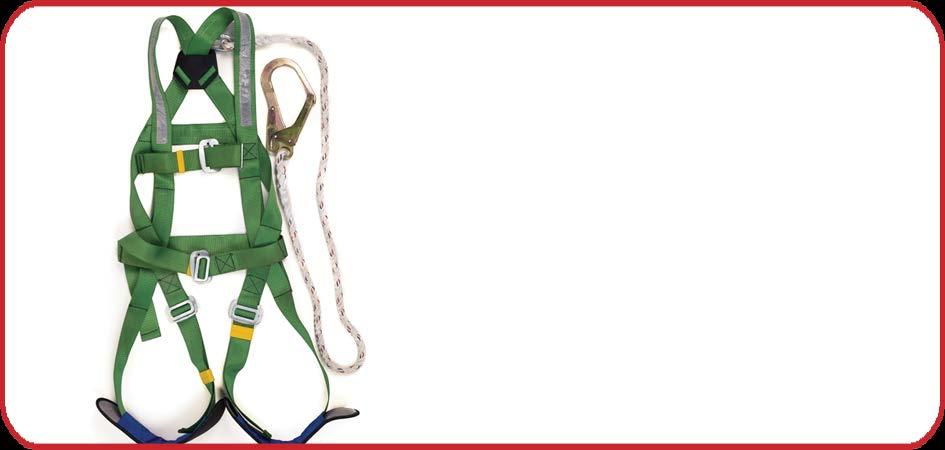
VIOLATION
All PFAS must have a deceleration device.
Ref. 3:23
Are there other issues in this photo? Email them to 411@mancomm.com
3:17 If you use a PFAS or positioning device in hoist areas, it must be set up so that you cannot move any farther than the edge of the walking or working surface. 1926.502(d)(24)
3:18 Your positioning device must be set up so that you cannot free fall more than 2 feet. 1926.502(e)(1)
3:19 Your positioning device must be secured to an anchorage that is able to support at least two times the potential impact load of your fall, or 3,000 pounds, whichever is greater. 1926.502(e)(2)
10
Basic Safety Awareness
5:13 Be alert for audible alarms of bi-directional machines and stay clear when they are moving in either direction. 1926.602(a)(9)(i)
5:14 When working near a public roadway, wear the reflective clothing that you are provided. 1926.651(d)
5:15 Stay clear of earthmoving or compacting equipment that are backing up with an obstructed rear view. 1926.602(a)(9)(ii)
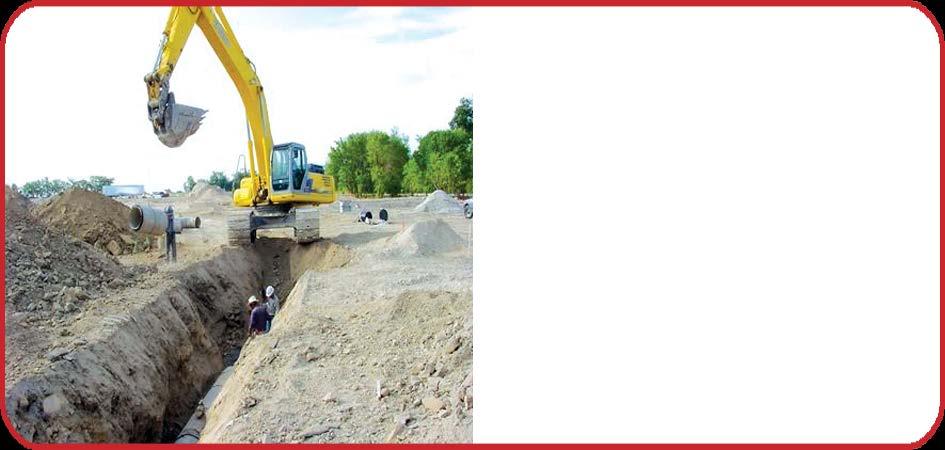
VIOLATION Employees must be clear of suspended loads.
Trench protection must be provided.
Ref. 5:44
Are there other issues in this photo?
5:16 Stay alert for reverse signal alarms and signalers who are assisting operators in backing up. 1926.602(a)(9)(ii)
5:17 Do not use any machinery, tool, or equipment which does not meet OSHA general safety standards — render it inoperable and notify your supervisor. 1926.20(b)(3)
5:25 Excavation and Trench Safety
5:26 Contact your supervisor if you see any objects located close to the edge of the excavation. 1926.651(a)
5:27 Be careful around underground installations in an open excavation and let your supervisor know if they are not protected to safeguard you from injury. 1926.651(b)(4)
17
Construction Segues
5:28 In trenches deeper than 4 feet, tell your supervisor if you have to travel more than 25 feet to exit it. 1926.651(c)(2)
5:29 Report loose rock or soil near the trench to your supervisor. 1926.651(j)(1)
5:30 Get out of any trench immediately if it looks unsafe and report to your supervisor. 1926.651(k)(2)
5:31 When mobile equipment is operating near a trench, stay clear if you are in the trench, even if there is a barricade or warning system. 1926.651(f)
5:32 Do not enter an excavation if it looks unsafe and report to your supervisor. 1926.652(a)(1)
5:33 If you are at the edge of an excavation that is at least 6 feet deep and cannot be easily seen because of plant growth or some other blockage, you must be protected from falls by the use of guardrails, fences, or barricades.
1926.501(b)(7)(i)
5:34 Any damaged trench protective systems should be reported to your supervisor. 1926.652(d)(1)
5:35 If the shield system keeping you safe in a trench appears like they are holding more than they are meant to, tell your supervisor. 1926.652(g)(1)(i)
5:36 Do not engage in site clearing unless you are protected from poisonous plants and instructed in proper first aid. 1926.604(a)(1)
5:40 Suspended loads and other overhead hazards
5:41 Never go under loads handled by lifting or digging equipment and stay a safe distance from the loads when they are being loaded or unloaded. 1926.651(e)
5:42 Do not work under concrete buckets while they are being lifted or lowered into position. 1926.701(e)(1)
18
General Safety & Health
Pictograms
Flame
Flammables
Pyrophorics
Self Reactives
Self-Heating Emits Flammable Gas Organic Peroxides
Flame Over Circle
Oxidizers Exclamation Mark
Irritant
Acute Toxicity (harmful)
Respiratory Tract Irritation
Exploding Bomb
Explosives
Organic Peroxides
Corrosion Corrosives
Gas Cylinder
Gases Under Pressure
Dermal Sensitizer
Narcotic Effects
Self Reactives
Health Hazard
Carcinogen
Reproductive Toxicity
Mutagenicity
Skull and Crossbones
Acute Toxicity (severe)
Respiratory Sensitizer
Target Organ Toxicity
Aspiration Toxicity
27
Construction Segues
8:16 Your employer will have a written hazard communication program for your work to help you recognize and avoid exposure to dangerous substances. 1910.1200(e)(1)
8:17 You may ask to see the SDS for any hazardous substance on your job site, even if it is from another employer on the same job site. 1910.1200(e)(2)(i)-(iii)
8:18 Your supervisor has SDS for every hazardous chemical on the job site to provide you with information you need to stay safe while working around the chemicals.
1910.1200(g)(1)
8:19 Each SDS contains information you can use, like the chemical's name, hazard identification, exposure controls, PPE, stability, toxicity, etc. 1910.1200(g)(2)(i)-(xvi)
8:20 SDS contains the chemical's hazards. 1910.1200(g)(2)(ii)
8:21 SDS contains first aid measures. 1910.1200(g)(2)(iv)
8:22 Your employer's hazard communication program will be written to inform all employees, including any that are employed by other employers, about precautions that employees must take to stay safe at your job site. 1910.1200(e)(2)(ii)
8:23 Your employer's hazard communication program will include the labeling system used in the workplace to inform all employees, including any that are employed by other employers. 1910.1200(e)(2)(iii)
8:24 Your employer's hazard communication program will be made available to you if you want to see it. 1910.1200(e)(4)
28
General Safety & Health
8:30 Labels on containers containing hazardous chemicals
8:31 Any containers with hazardous chemicals will be marked with the product identifier on the container label. 1910.1200(f)(1)(i)-(vi)
8:32 Shipped containers with hazardous chemicals will be marked with their proper signal word. 1910.1200(f)(1)(ii)
8:33 The manufacturer of hazardous chemicals must label, tag, or mark shipped containers with a hazard statement. 1910.1200(f)(1)(iii)
CORRECT
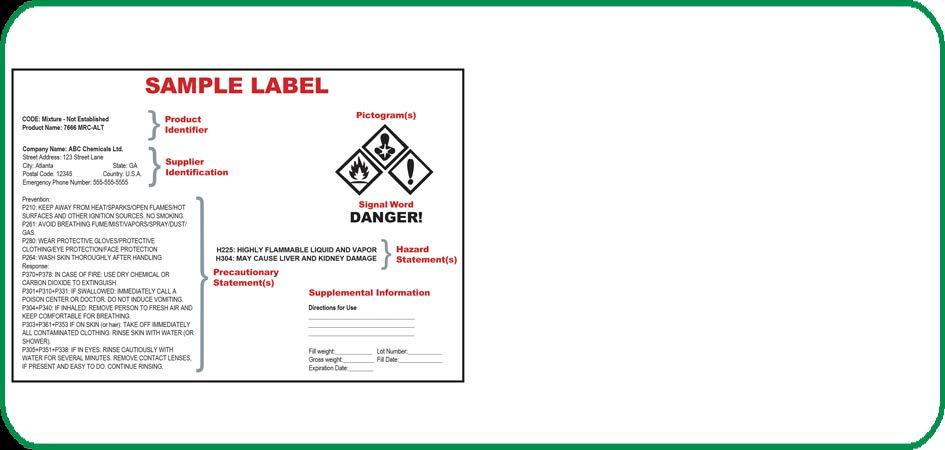
Shipped containers with hazardous chemicals will be marked with pictograms.
Ref. 8:34
Are there other issues in this photo?
8:34 Shipped containers with hazardous chemicals will be marked with pictograms. 1910.1200(f)(1)(iv)
8:35 Shipped containers with hazardous chemicals will be marked with precautionary statements. 1910.1200(f)(1)(v)
8:36 Shipped containers with hazardous materials will contain the manufacturer's or other responsible party's contact information. 1910.1200(f)(1)(vi)
29
Construction Segues
8:40 Hazard chemical and general job-related hazard training you can expect:
8:41You will be trained on the hazard communication rules, and about any hazardous chemicals on your job site. 1910.1200(h)(1)-(2)
8:42 Your employer will provide you with training on hazards and other job-related safety matters that you need to know, so that you can work safely. 1926.20(f)(2)
8:43 You will be trained to recognize all potential hazards that you may be exposed to, and how to avoid unsafe conditions. 1926.21(b)(2)
8:44 Your supervisor will instruct you on safe handling, potential hazards, and personal protective measures needed if you have to handle poisons, caustics, or other harmful substances on the job. 1926.21(b)(3)
8:45 If you may be exposed to any harmful plants or animals at the job site, your employer will instruct you on the potential hazards, how to avoid injury, and first aid in case of injury. 1926.21(b)(4)
8:46 You will be trained in the safe handling and use of flammable liquids, gases, or toxic materials if your job requires handling them, and you will also be trained on any specific OSHA requirements that apply to those hazards. 1926.21(b)(5)
8:50 General housekeeping rules of thumb:
8:51 Keep passageways and stairs cleared. 1926.25(a)
8:52 If there is debris with scrap lumber with nails sticking out or similar, you need to notify your supervisor and leave it alone. 1926.25(a)
8:53 As your work proceeds, you must remove all scrap lumber, waste material, and trash from the work area. 1926.252(c)
30
General Safety & Health
8:54 Due to its potential to start fires, you must dispose of oily rags and other waste with flammable material and other hazardous wastes, such as caustics, acids, harmful dusts, in a specially designed and marked container for that purpose which will also have a lid. 1926.25(c)
VIOLATION

Poor housekeeping often indicates other safety problems on the job.
Ref. 8:53
Are there other issues in this photo?
8:55 Whenever you are in a building or structure, all the exits must be open and unblocked, and no lock or fastening device is allowed that would prevent escape. If this is not so, notify your supervisor. 1926.34(a)
8:56 You must keep exits free of obstructions for immediate use in case of fire or other emergency. 1926.34(c)
8:57 Before any work starts, your employer will make plans for getting quick medical attention in case of a serious injury. 1926.50(b)
8:58 Your employer will provide first aid supplies that are easy to access in case of an injury. 1926.50(d)(1)-(2)
31
Scaffolds
13:1 Midrails, screens, mesh, or similar structural members must be installed between the top edge of the guardrail system and the scaffold platform. 1926.451(g)(4)(iii)
13:2 If midrails are used on a scaffold, they must be installed half way between the top edge of the guardrail system and the platform surface. 1926.451(g)(4)(iv)
13:3 If screens and mesh are used on a scaffold, they must go from the top edge of the guardrail system to the scaffold platform and cover the entire opening between the supports. 1926.451(g)(4)(v)
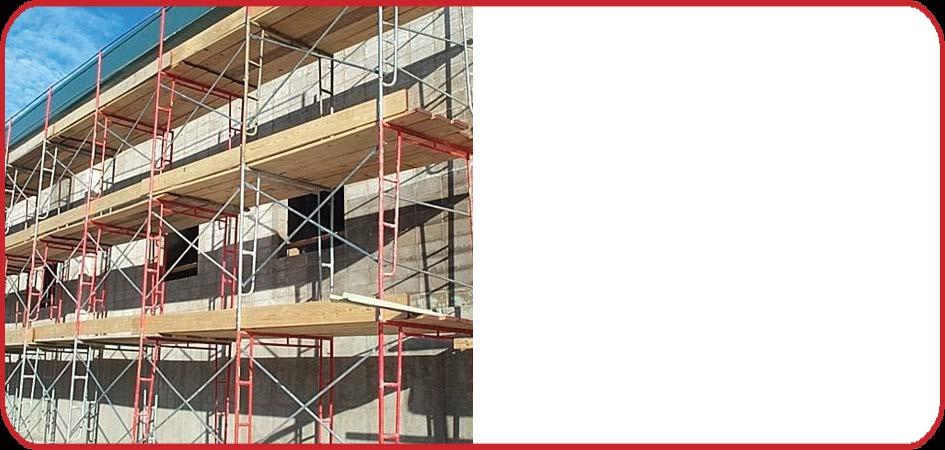
VIOLATION
Crossbracing may be substituted for the toprail or the midrail but not both.
Ref. 13:4
Are there other issues in this photo?
13:4 Crossbracing may be used instead of a toprail or midrail (not both) and must meet specific requirements.
1926.451(g)(4)(xv)
13:10 Important scaffold-related definitions
13:11 A competent person is capable of identifying existing and potential hazards in the work environment that are hazardous, unsanitary, or dangerous to employees, and who has the authority to take corrective measures. 1926.450(b)
46
13
Scaffolds
13:12 Exposed power lines are electrical power lines that are accessible to employees and not shielded from contact, not including extension cords or power tool cords.
1926.450(b)
13:13 A fabricated frame scaffold is a scaffold consisting of a platform supported on fabricated end frames with integral posts, horizontal bearers, and intermediate members. 1926.450(b)
13:14 A failure is a load refusal, breakage, or separation of component parts. A load refusal is the point where the ultimate strength is exceeded. 1926.450(b)
13:15 A guardrail system is a vertical barrier, consisting mainly of toprails, midrails, and posts, put up to prevent employees from falling off a platform to lower levels.
1926.450(b)
13:16 Lower levels are areas below the level an employee is located and to which he or she can fall, including ground levels, floors, roofs, ramps, runways, excavations, pits, tanks, materials, water, and equipment. 1926.450(b)
13:17 Maximum intended load is the total load of all persons, equipment, tools, materials, and other loads reasonably intended to be applied to a scaffold or scaffold component at any one time. 1926.450(b)
13:18 Open sides and edges are the edges of a platform that are more than 14 inches away horizontally from a sturdy, continuous vertical surface, such as a building wall, or a sturdy, continuous horizontal surface, such as a floor, or a point of access. An 18-inch horizontal threshold is allowed for plastering and lathing work. 1926.450(b)
47
Construction Segues
13:19 A personal fall arrest system ("PFAS") is a system used to stop an employee's fall. It is made up of an anchorage, connectors, a body harness, and may include a lanyard, deceleration device, lifeline, or a combination of these. 1926.450(b)

13:20
CORRECT
Platforms must be complete on each working level.
Ref. 13:20
Are there other issues in this photo?
A platform is a work surface elevated above lower levels. These can be made of individual wood planks, fabricated planks, fabricated decks, and fabricated platforms. 1926.450(b)
13:21 A scaffold is any temporary elevated platform, supported or suspended, and its supporting structure used for supporting employees and materials. 1926.450(b)
13:22 A self-contained adjustable scaffold is a combination supported and suspension scaffold made up of an adjustable platform mounted on an independent supporting frame that is not part of the object being worked on, and which is equipped with a means to permit the raising and lowering of the platform. 1926.450(b)
48
Scaffolds
13:23 Self-contained adjustable scaffold systems include rolling roof rigs, rolling outrigger systems, and some masons' adjustable supported scaffolds. 1926.450(b)
13:24 Stilts means a pair of poles or similar supports with raised footrests that permits walking above the ground or working surface. 1926.450(b)
13:25 A system scaffold is a scaffold made up of posts with fixed connection points that accept runners, bearers, and diagonals that can be interconnected at predetermined levels. 1926.450(b)
13:26 Unstable objects are items whose strength, configuration, or lack of stability may allow them to become dislocated and shift, and therefore may not properly support the loads imposed on them. 1926.450(b)
13:27 Unstable objects do not provide a safe base support for scaffolds, platforms, or employees, including barrels, boxes, loose brick, and concrete blocks. 1926.450(b)
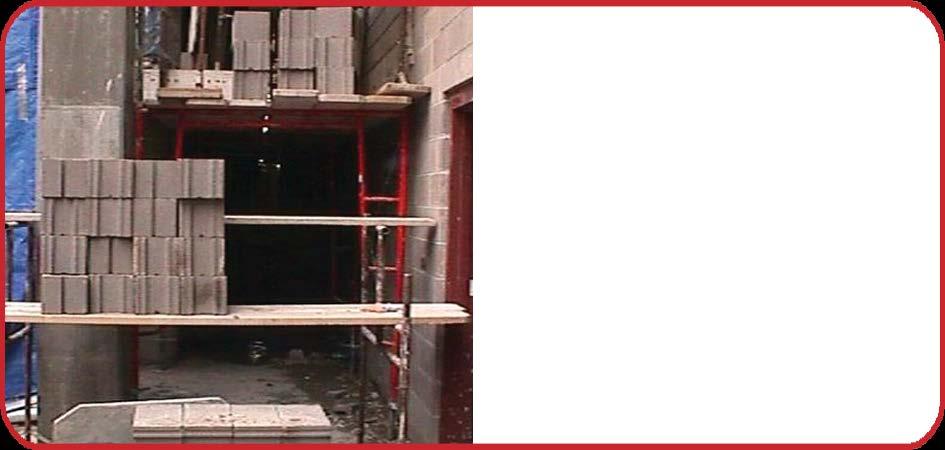
VIOLATION
Unstable objects, such as concrete blocks, may not be used for gaining access.
Ref. 13:27
Are there other issues in this photo?
13:28 A walkway is a portion of a scaffold platform used only for access, and not as a work level. 1926.450(b)
49
Construction Segues
13:35 Any scaffold you work on must be able to support, without failure, its own weight and at least 4 times the maximum intended load. 1926.451(a)(1)
13:36 Each platform of scaffolds that you work on must be fully planked or decked at all working levels. 1926.451(b)(1)
13:37 Each ladder jack, top plate bracket, roof bracket, and pump jack scaffold that you use must be at least 12 inches wide. 1926.451(b)(2)(i)
13:38 When scaffolds are used in areas too narrow to allow at least 18-inch wide platforms, they must be as wide as possible and you must be protected from fall hazards by guardrails and PFASs. 1926.451(b)(2)(ii)
13:39 When a scaffold platform is more than 2 feet above or below a point of access, you must use a ladder, ramp, walkway, or direct access from another scaffold, structure, personnel hoist, or similar surface. 1926.451(e)(1)
13:40 You can only go directly from one surface to another if the scaffold is no more than 14 inches away horizontally and no more than 24 inches above or below the other surface. 1926.451(e)(8)
13:41 Do not load scaffolds with more than their maximum intended load or rated capacity, whichever is less. 1926.451(f)(1)
13:42 Check your scaffold for a signed green inspection tag when you start your shift. 1926.451(f)(3)
13:43 Report damaged or weakened scaffolds to your supervisor immediately. 1926.451(f)(4)
13:44 Scaffolds or materials and people on them must not come any closer than 10 feet to overhead power lines. 1926.451(f)(6)
13:45 Do not put up, take down, change, or move scaffolds unless you are working under the direct supervision of a qualified competent person. 1926.451(f)(7)
50
Scaffolds
13:46 You will be trained and authorized by the competent person to work with scaffolding. 1926.451(f)(7)
13:47 Do not go on scaffolds during high winds, unless the competent person authorizes it. 1926.451(f)(12)
13:48 When working on platforms, do not deflect the platform more than 1/60 of the span when loaded. 1926.451(f)(16)
13:49 If you are working on a scaffold more than 10 feet above a lower level, you will be provided with fall protection. 1926.451(g)(1)
13:50 You must be protected by a PFAS if you use a boatswains' chair or a catenary, float, needle beam, or ladder jack scaffold. 1926.451(g)(1)(i)
13:51 If you use a single or two-point adjustable suspension scaffold, you must be protected from falls by guardrails and a PFAS. 1926.451(g)(1)(ii)
13:52 Do not pile up scrap or materials on the scaffold. 1926.451(f)(13)
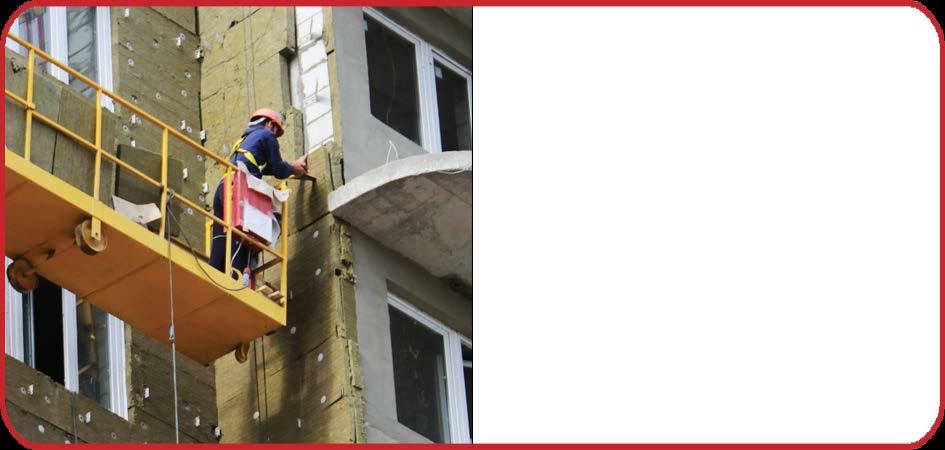
VIOLATION
You must use guardrails and a PFAS when using a suspension scaffold.
Ref. 13:51
Are there other issues in this photo?
51








